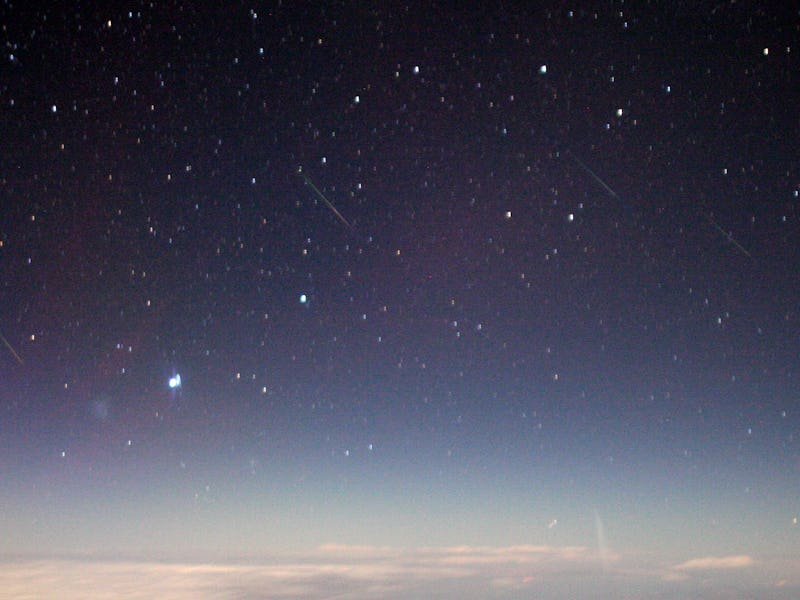Aurigids: You need to watch the most mythical meteor shower of the year this week
The annual Aurigid Meteor Shower peaks on September 1 and is visible to stargazers in most of the Northern Hemisphere.

We all need to wish on a falling star sometimes, and this week could be your chance, thanks to the Aurigid Meteor Shower.
The annual Aurigid Meteor Shower peaks this Thursday, September 1. Though the Aurigids are less flashy than some (the American Meteor Society calls them a “reliable minor shower”), they still put on a show worth watching. That’s especially true since this year’s shower coincides with a waxing crescent moon, meaning moonlight won’t upstage the meteors. Here’s everything you need to know to catch the Aurigids in action.
When to see the Aurigid Meteor Shower
The Aurigids pelt our atmosphere with bits of burning rock and dust about this time every year. This year’s Aurigid shower started on August 28 and will continue until September 4 or 5, but the real show happens at the meteor shower’s peak, on September 1.
On most nights this week, a sharp-eyed observer can expect to see about 1 meteor an hour from the Aurigids. But on September 1, when Earth will pass through the densest part of the cloud of dust and debris that fuels the meteor shower, estimates range from 6 to 12 meteors per hour under ideal viewing conditions, which include clear, dark skies and a nontrivial amount of luck.
A good supply of caffeine may also help, since the Aurigid meteors won’t make their appearance until after midnight in most of the mid-latitude Northern Hemisphere. That’s when the constellation Auriga, which marks the point in the sky where the Aurigid meteors appear to come from, first appears above the eastern horizon. But the higher Auriga is in the night sky, the more meteors you’re likely to see, and the best show should happen in the hour just before dawn.
Here’s how to find Auriga in the sky — by looking for the much better known constellations Gemini or Perseus.
How to watch the Aurigid Meteor Shower
Auriga isn’t one of the constellations most of us learned to spot as kids, so what’s the best way to find the Aurigid meteor shower in the night sky?
If you’re a fairly experienced amateur astronomer, you just need to know that the Aurigids’ radiant point is at a right ascension of about 06:06 and a declination of about 39 degrees. The rest of us might have better luck with a mobile star map like Stellarium (several other star map mobile apps are available for Android and Apple devices.
Search for the constellation Auriga or the star theta Aurigae A, which is the closest one to the Aurigids’ radiant point (the spot the meteor shower appears, thanks to a fun optical illusion, to radiate from), in the night sky. Capella is another good landmark to search for, because it’s in the constellation Auriga and it’s the sixth brightest star in the sky.
And there’s always the dead reckoning approach: look northeast. In the hour just before dawn, look about halfway up in the sky; look a bit lower down if you’re out earlier.
The Aurigid meteor shower as observed by a group of astronomers on a NASA mission at 47,000 feet.
What causes the Aurigid Meteor Shower?
About 2,000 years ago, Comet C/1911 N1 Kiess (just Comet Kiess to its friends) passed through the inner Solar System, leaving behind a trail of dust, ice, and rock — the average comet is basically an icy version of Pigpen from the Peanuts comics. Earth’s orbit passes through that debris cloud every year at around the same time, in late August and early September. Tiny bits of rock and dust collide with our upper atmosphere at around 234,000 kilometers per hour, where they burn up in dramatic streaks of flame that seem drastically out of proportion to their size.
Because those bits of comet debris hit the atmosphere from the same direction, at the same speed and angle, they appear to radiate from the same dark center point in the sky. It’s the same optical trick that makes your car windshield look like you’re flying the Millenium Falcon through hyperspace when you’re actually just driving through a snowstorm at night.
Comet Kiess probably hails from the Oort Cloud, the cloud of icy objects at the far outer edges of our Solar System, well beyond even the chilly distant orbits of Kuiper Belt worlds like Pluto and Sedna. Its orbit carries it from those frigid cosmic outskirts into the warmer inner Solar System once every 2,000 years, making it what’s called a long-period comet.
Long-period comets like Kiess are frozen samples of the early Solar System. That’s why, when Earth passed through an especially dense part of the Aurigid debris cloud in 2007, an international team of astronomers measured the meteors’ trajectories and their spectra (the specific wavelengths of light emitted and absorbed by different chemical elements, which can combine to tell scientists what an object is made of). Their goal was to better understand what comets like Kiess, and therefore the early Solar System, are made of.